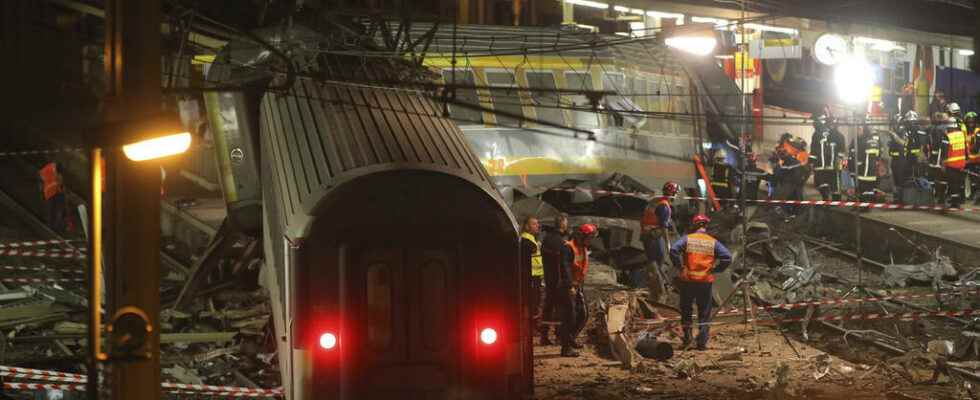The Brétigny train disaster trial opened on Monday April 25 before the Évry court in the Paris region. For eight weeks, SNCF, SNCF Réseau and a young executive from the company will have to answer for manslaughter and involuntary injury for the derailment of a train on July 12, 2013, resulting in the death of seven people and causing more than 400 injured. The victims and their families hope to establish the truth and the responsibilities. But it’s a battle of experts ahead.
How could a steel fishplate connecting two rails together have turned over and caused the derailment of the train that linked Paris to Limoges on July 13, 2013 ? That’s the question which will be at the heart of the debates for two monthswith two opposing theses.
For the prosecution, the shortcomings and faults of the two companies who appear as legal persons: SNCF Réseau, in charge of the rail network, and SNCF, responsible for its maintenance, are the cause. For the defence, it was a metallurgical defect, making the accident unpredictable, and not the dilapidation of the heart of the splint which was the cause.
” It had been changed in 2006, it was new, therefore, what we say after knowing reports from forensic expertswhich we had been waiting for a long time, did not convince us, explains Maître Emmanuel Marsigny. Not out of principle or expediency, but simply because the explanations they give are not consistent, there are a lot of mistakes. »
Experts in error, but no error on the part of the SNCF, if not of the young executive of 24 years who carried out the last inspection. Difficult to hear for the civil parties, but necessary for Thierry Gomes who lost both parents that day: “ We’re not fooled, it’s a bit of the earthen pot against the iron pot, of course, we’re going to attend very factual pleadings and testimonies, without empathy, which will surely shock us, but I think that it is an important step in the journey of victim resilience, and we have to be there. »
The trial will last until mid-June.
